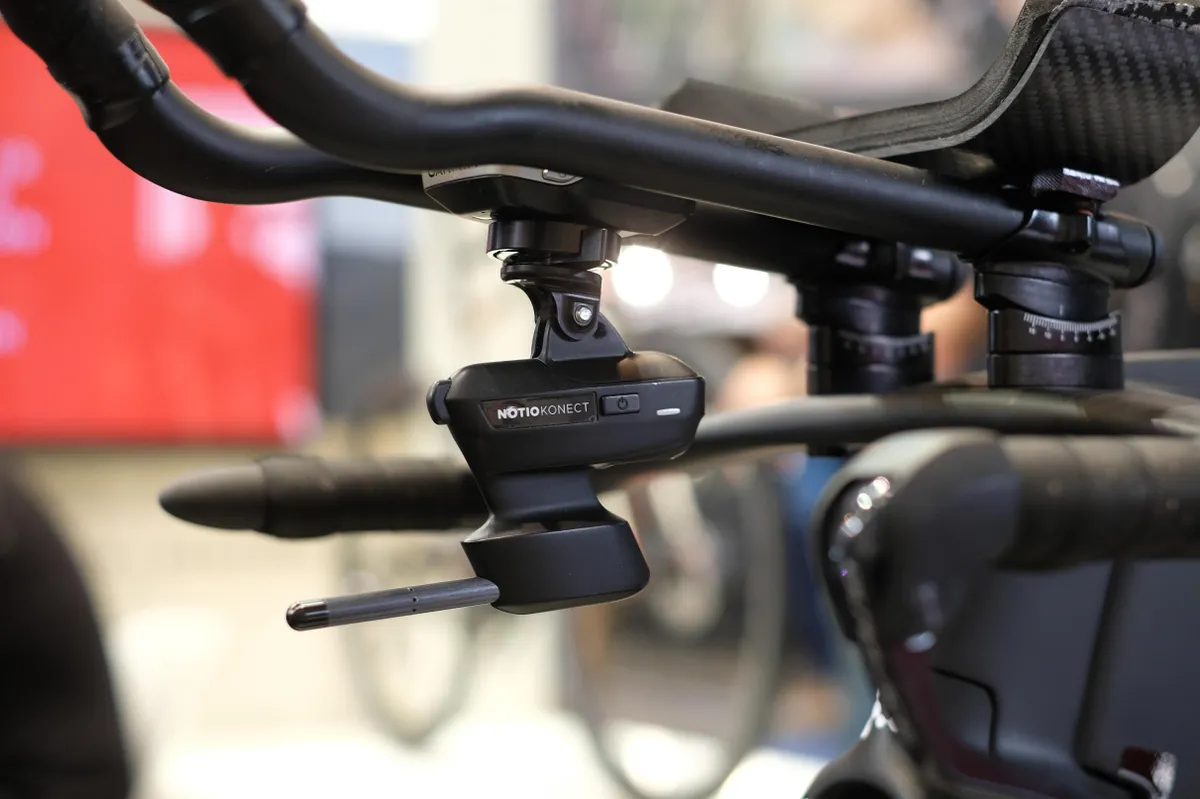In 2018, many riders are investing heavily in aero bikes, wheels, helmets and clothing on the promise of going faster, but virtually none have invested in optimizing the largest source of drag: themselves.
Now a few smaller companies are offering ways to measure rider drag in real time, and the GPS giant Garmin is getting in on the game.
- Notio Konect provides all your aero data without a wind tunnel
- Argon 18’s concept bike knows exactly how aero you are
You’re such a drag
Riding a bike is a rolling physics equation, with the power you produce juxtaposed against resistance from the air, gravity and friction. When climbing, weight is the big factor. When riding on the flats, aero drag is the primary obstacle. To get faster, you can a) get lighter, b) increase power or c) reduce aero drag.
As roughly 80 percent of the drag of the bike/rider package is the rider, improving the rider’s shape in the wind can have a huge impact. Top pros use wind tunnels to optimize their positions, especially for racing time trials.
Drag is often measured in CdA. The lower the number, the better. One of the many tricky things about aero testing is balancing a low-CdA position with a sustainable setup that allows a rider to generate good power.
The cost and geographic rarity of wind tunnels make them unobtainable for the average rider, but a few companies are now offering bike-mounted devices that calculate CdA when riding.
Wind sticks and power meters

John Hamann has been selling a handlebar device for years that measures a variety of a rider’s environmental factors, including wind speed, ground speed, gradient, air density and more.
First dubbed iBike, the handlebar-mounted unit was purported to measure or calculate all the factors opposing a rider’s forward movement, and in doing so calculate power.
Now called the PowerPod, the unit can be used in conjunction with a power meter to deliver real-time CdA data.

To use it, a rider first calibrates the system by riding in a baseline position and plugging in weight and other information. Then, the PowerPod’s wattage measurement is run against that from a direct-force power measurement, and the difference is attributed to changes in CdA.
Hamann has partnered with Everysight, a tech company that makes the Raptor heads-up sunglasses display. By using the Raptor, a rider can ride down the road and see data such as speed, power and CdA on the inside of the lens.
Raptor and Hamann settled on a few simple displays for drag, including a raw CdA number but also a color-coded indicator that lets a rider know if they are at, above or below their target CdA.

The basic idea is that a rider can — on their own bike and out on the open road — experiment to find the fastest but most sustainable position.
“Wind-tunnel position is one thing; on the road is another thing,” said Everysight’s HyFrir, who explained that the Raptor can give real-time time losses or gains based on a rider’s default position.
“The idea is that you ride and your CdA is green, you don’t even think about it. But after an hour, you get tired, your back arches, and your CdA goes down and turns red. Then you can be aware of what changes you need to make.”

Argon 18 has a similar technology to the PowerPod that it calls the Notio Konect. Positioned underneath the handlebars, the Notio Konect can measure a variety of environmental factors and deliver a CdA number to a Garmin Edge computer via a Garmin Connect IQ app.
A few companies have used similar technology to development bikes and gear, often using technology from a company called Alphamantis. Recently, Garmin purchased Alphamantis.
Garmin’s involvement
Although a Garmin product similar to the PowerPod is likely, the GPS giant is not yet talking about it. The Alphamantis system was designed to work in an indoor velodrome where climate can be controlled. And Garmin is actively using that setup, which is called TAS.
“While we can’t comment on future products, one of the goals for Garmin’s aero team in Montreal is to help cyclists improve their aerodynamic performance,” said Ross Stirling, Garmin’s director of engineering. “Currently, our Track Aero System (TAS) is used by both professional teams and national teams, as well as athletes looking to improve their performance. It is the only aero testing system in the world precise enough to guide a user on fine adjustments in position or equipment, in real world riding conditions.”
Stirling and the rest of Garmin are also certainly aware of the Argon 18 and PowerPod systems. Garmin’s Connect IQ apps are third-party-built products that work on newer Edge computers.
“We want to make sure Garmin offers a great display experience for products like these,” Stirling said.

